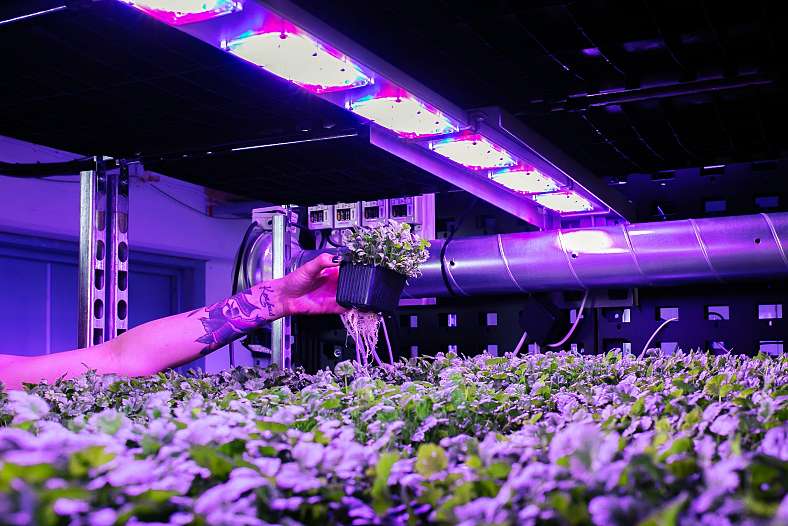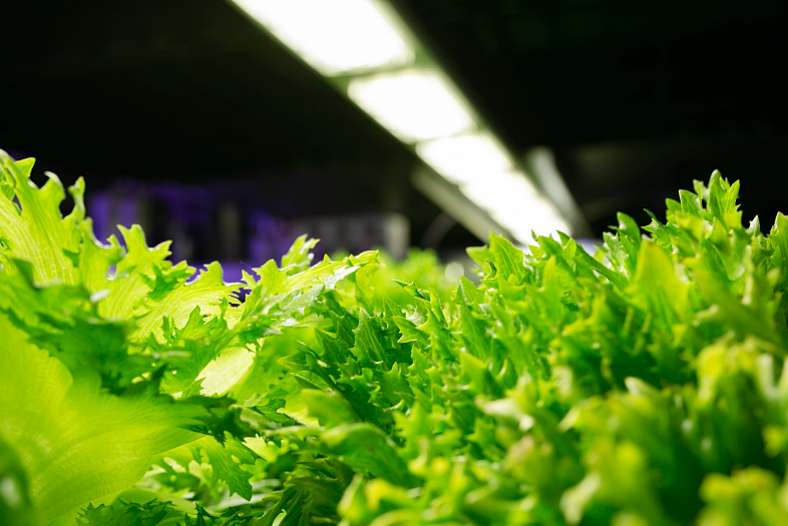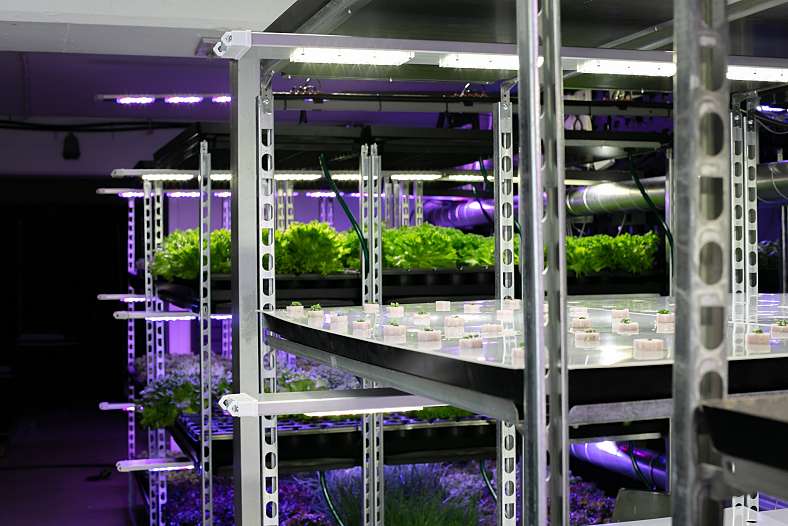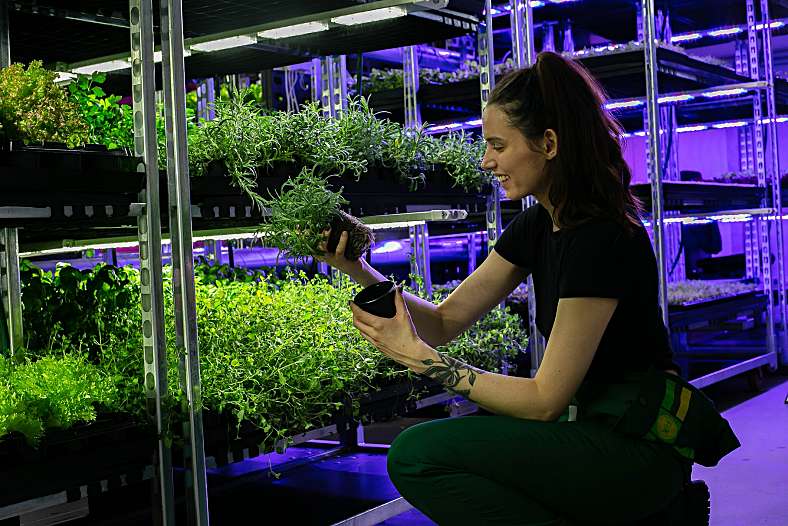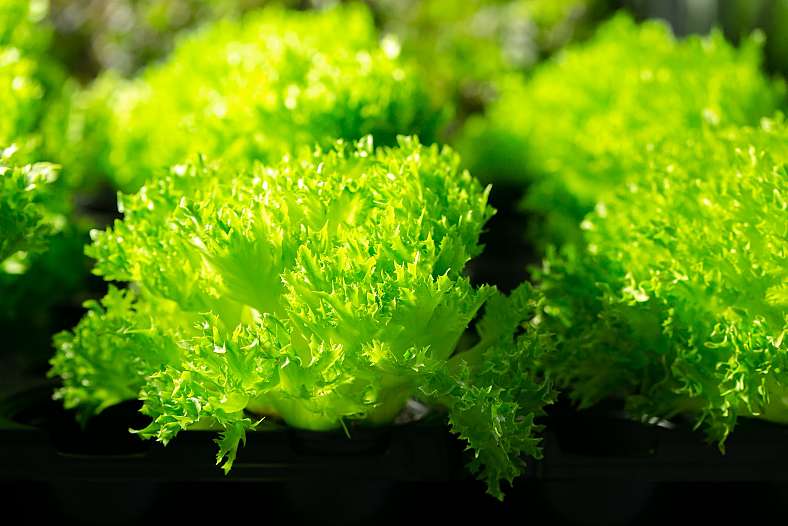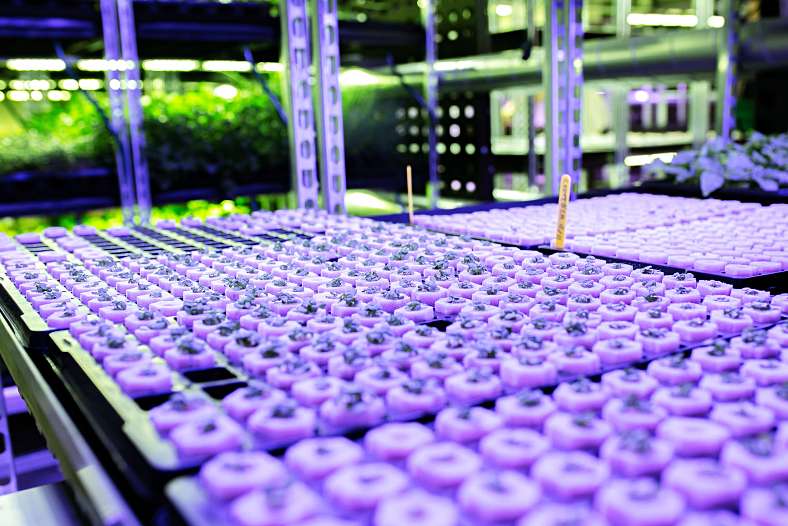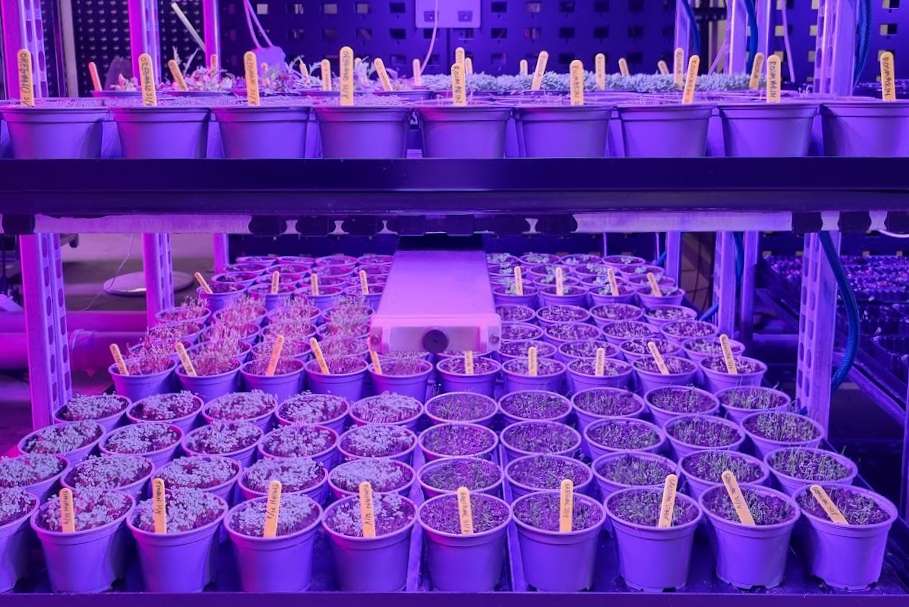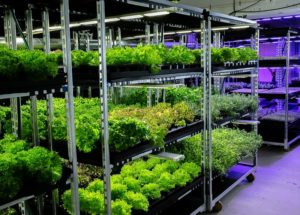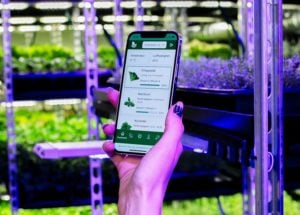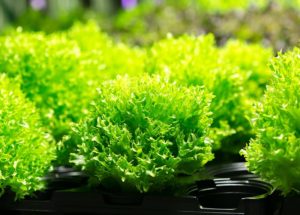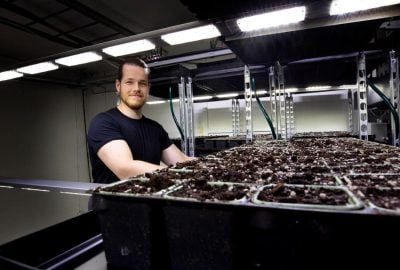Vertical farming germination is an excellent way to maximize plant factory profits. Your vertical farming system might in fact be more versatile than you realize. Read on to learn more about germination and two other ways to utilize vertical farming systems best.
If you are thinking about investing in a vertical farming system, you should also consider how to make the best use of it. Let us tell you about three different methods for getting a good return on investment as soon as possible.
Related article: What does vertical farming mean to investors?
Naturally, you’ll be growing plants in your vertical farming system, but there are different ways of doing so. How and what you choose to grow affects your choice of seeds, daily routines, and profitability. For instance, vertical farming germination might significantly improve plant growth efficiency.
In short, three types of plant growth make the best use of vertical farming systems:
Vertical farming food production
Vertical farms are made up for complete plant production. In other words, it can handle everything from sowing to packaging and shipping to customers. This plant growing method gives you great control to increase efficiency, optimize plant growth, and ensure profitability.
Complete plant production requires a complete vertical farming system, though. This means that your initial investment will be high. Therefore, investigating the market, researching the industry, and fine-tuning your strategy beforehand is crucial. But, if you do it right, profits might pour in soon.
Which plants are relevant for v-farming?
Many plants will thrive in a vertical farming system. Still, most v-farms tend to start their business journey with leafy greens. This is because leafy greens can be cultivated up to twelve times yearly. They are relatively easy to grow, and the demand is always high.
All kinds of lettuce, most types of herbs, many different cabbages, microgreens, spinach, and all sorts of flowers will grow well in vertical farming systems. They will also be more nutritious, tastier, and flavorful than other plants.
How can that be? Find out here: Vertical farming vs. traditional farming
What are the advantages of vertical farming
There are many advantages to gain from full-scale plant production with a vertical farming system. Some key benefits are being close to your market, easily reaching your target customers, and selling a highly marketable product.
Furthermore, vertical farming systems are made for automating plant growth. This enables you to minimize costs, optimize large-scale plant growth, and quickly scale production to target larger customers.
Prom a more practical standpoint, vertical farming systems take advantage of and recycle their excess materials, like heat, water, or even CO2 from nearby facilities. This is also why vertical farms reduce environmental impact.

Vertical farming germination
Germination, aka pre-cultivation, can easily be performed in plant factories. The idea is to cultivate strong seedlings or spores in a safe environment to ensure they will thrive when moved to different growth zones in your plant factory, greenhouses, or even outdoors.
Avisomo has made numerous attempts at hardening our seedlings to make them withhold temperature variations, shifting humidity, and intense light. This way, we’ve been able to «toughen up» the plants so that more of them survive in all kinds of conditions, even outdoors in our native Norway.
Vertical farming germination removes the risk of weed and pest infestations. It also eliminates any chance of unexpected weather changes which might harm small, vulnerable plants. Furthermore, on a vertical farm, you know exactly how much light and heat the plants are exposed to. This means two things:
Faster plant production and perfect germination every time!
When Avisomo tested germination in our vertical farming system, we got a 100% germination rate on several occasions. This rarely happens in greenhouses. As a result, each plant became equally dense and beautiful, and production costs never changed, regardless of the season.
An obvious advantage is that no planted seeds go to waste. Furthermore, it is possible to sped up plant growth considerably by vertical farming germination. Vertical farms tend to have three growth zones: germination, cultivation, and harvesting. It works well, but might not be the most efficient way.
Whan moving plants from germination, to cultivation, the transition often causes the plants to stop growing for a few days in order to readjust to the new conditions. If you set up more growth zones, for smother transitions, the plant growth can instead be accelerated without pause.
In large plant factories, avoiding these couple of transition days might amount to quite an increase in plant growth efficiency over time. To capitalize on the power of vertical farming germination, it is therefore important to plan your growth strategy well.
Accellerating the plant growth is of course crucial when you do germination for the sake of your own food production. If you plan to germinate plants for seedling sales to other farmers, or outdoor farming, there are other aspects to consider, such as plant type, temperature, and timing.
What are the most common germination plants?
Some plants don’t need germination, meaning they are not well-suited for pre-cultivation. The most common plants to germinate are lettuce, herbs, cucumber, tomato, cabbage, celery, and some types of herbs and flowers.
Related article: Vertical farm plants: What can you grow?
Plants like leeks and celery need at least eight weeks of germination before outdoor or greenhouse re-planting. Other plants germinate faster. Peas, for instance, can be moved outside after 2-4 weeks, while some types of cabbage can be moved after about six weeks.
Seed germination tips
If you’re considering getting into vertical farming germination, you need to keep certain things in mind. The substrate climate is critical, for instance. Seeds grow best in a moist substrate at room temperature.
However, many vegetables thrive at temperatures around 15-22 degrees Celsius. It is therefore essential to place the trays in a warm area so that the seeds covered with the substrate will remain moist. If in doubt, contact Avisomo for vertical farming tips anytime.
The trays should be placed under bright light when the first sprouts appear. In a vertical farm, a blue light spectrum is preferable since it promotes compact plant growth. This prepares the plants for outdoor or greenhouse stress from bright, unrelenting sunlight.
Some plants, like cabbage and lettuce, grow best in temperatures lowered to 10-15 degrees Celsius at the end of the germination period. Lowering the temperature is one way of hardening the plants to withhold cold spring nights on outdoor fields.
Choosing the right time to pre-cultivate
Timing is alfa and omega when it comes to vertical farming germination. A common mistake is the premature starting of pre-cultivation. Before germinating, you must ensure that your vertical farming system has enough space.
It is also crucial to calculate the cost since it can be expensive to keep greenhouses heated before the plants are moved there. For outdoor plants, you need to consider the time frame of germination and when your plants tend to grow best in a natural environment.
The advantage of indoor pre-cultivation is that timing for re-planting can be carefully planned and even readjusted. If the outdoor temperature is not as expected at the scheduled moving time, you can always keep the plants indoors for a while longer.
How so? There are several ways to pause plant growth in vertical farming systems. Reduced watering or lower temperature, for instance, will halt the development of certain plants. Other plants become dormant in less light but stay healthy if the blue spectrum is sufficient.
In other words, you can spend less energy and cut costs while waiting for the perfect plant growth conditions. This makes germination a powerful method in any farmer’s arsenal of plant growing techniques.
Related article: How to reduce vertical farming energy consumption?
Light and temperature effects on seed germination
Plant optimization in vertical farming systems requires a perfect balance between temperature and light. Too high temperature in relation to the light will cause the plant growth to stretch. This results in lower quality plants that are harder to successfully re-plant outdoors.
Another advantage of pre-cultivation in vertical farms is complete control of all conditions. For instance, you can adjust for the perfect temperature at all hours of the day and all seasons of the year.
Find out more: Why is LED grow lights best for vertical farming?
If you plan year-round production of plants such as tomato, cucumber, lettuce, or herbs, it might be profitable also to do year-round germination. If you have greenhouses available, these can then be integrated into the vertical farming production to increase returns.
At Avisomo, we’ve calculated projections for many year-round manufacturers and delivered several vertical farming systems for this purpose. We would be happy to check out the profitability potential of your farm! Feel free to contact us anytime.
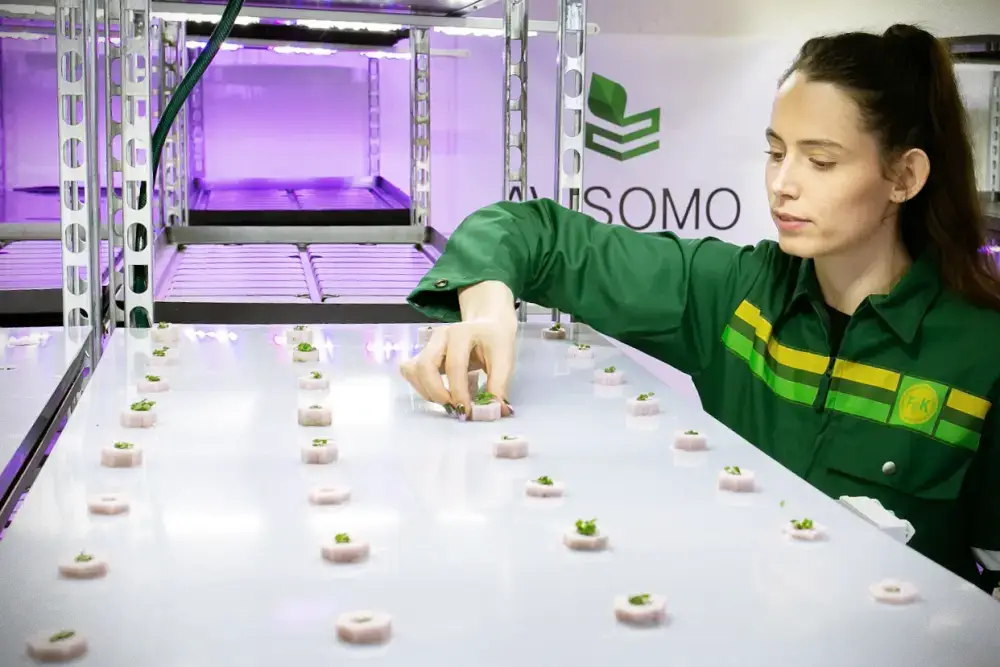
Vertical farming plant propagation
Avisomo has also tested vertical farming propagation. We’ve successfully propagated everything from rosemary and lettuce to rose bushes and tomatoes, even in the middle of winter!
What is plant propagation? In a nutshell, it means to increase plant reproduction by applying methods such as seeding, cutting, grafting, or layering. For example, re-planting of cuttings can help germination along if the process is unexpectedly delayed.
Vertical farming propagation can be advantageous since it requires less heating, moisture control, and added light. Certain plants, like rosemary and lavender, should be propagated by cutting since they respond very well to this cultivation method.
Choosing what to grow on your vertical farm
Investing in a vertical farming system is a big decision. It might be difficult to know which plants and cultivation methods will be most profitable in your area. In many cases, it is helpful to scout your local market and pinpoint your biggest competitors.
For instance, if you notice that certain plants are in high demand in your area, it might be wise to consider other alternatives. Then, you might circumvent saturations in the market and target vertical plant growth consumers hungering for new products.
Related article: Why invest in vertical farming?
The good news is that Avisomo’s vertical farming system is designed to be flexible. It enables you to adjust or alter your plant production quickly. So whether you opt for plant production of ready-to-sell products, germination, propagation, or all of the above, it can easily be done with our solutions.
If it turns out that your local market demand for seedlings is low, vertical farming germination is still an excellent way to ensure optimal plant factory efficiency. It makes sure that no sowing goes to waste, and if done right, it can speed up your plant production.
The flexibility of the Avisomo vertical farming system is a lifesaver since it’s never a crisis if you make a mistake. You can always switch to other plants or growing methods in no time and start over. V-farming has a steep learning curve. With our system and expertise you’ll find it manageable soon enough.
Find out more on Avisomo’s product pages.
Resources
iFarm: How do we make 100% seeds sprout
HortiDaily: Vertical farming gaining popularity among traditional growers
University of Missouri: Plant Propagation
Urban Green Farms: Seed Germination And Propagation. Everything You Need To Know!
Missouri Botanical Garden: Propagating Plants by Cuttings


